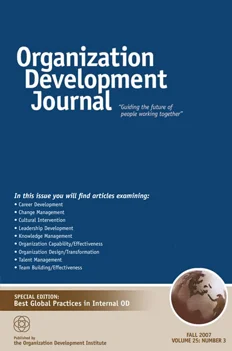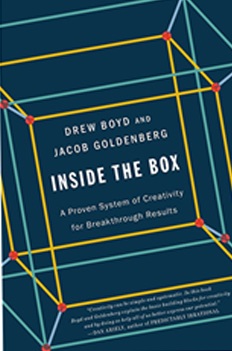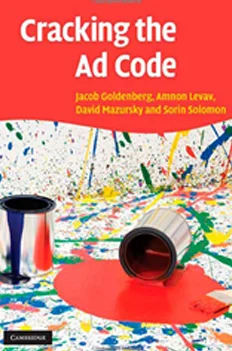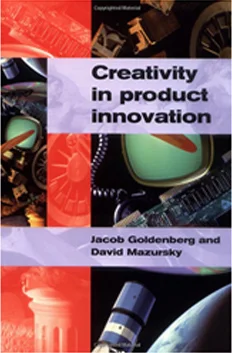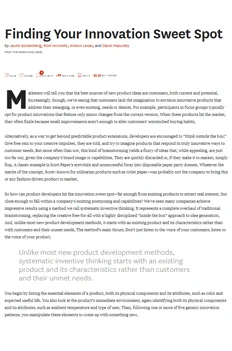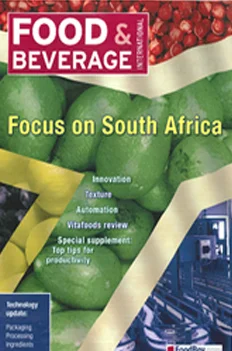Plenty to learn about our Thinking Method
At SIT, we believe in constant learning and in spreading our knowledge. That is why our thinking method is taught in dozens of universities globally, why our books have appeared in 14 languages, and our articles in dozens of journals. Browse, view, read, enjoy, and request more information.
For thousands of years, innovators have used five simple patterns in their inventions, usually without knowing it. These patterns are now embedded into the products and services you see around you today. Think of them as the DNA of a product or service. This book is about a method of creativity that allows you to harness those patterns and apply them to anything that you want to innovate.
Learn about the SIT Thinking Method via one of SIT’s senior facilitators, Erez Tsalik. If innovation is so important and unique, why do call every new product and every minor improvement innovative? Can we break away from our patterns of thinking, to come up with innovative ideas on demand, and translate them into actions?
Breaking our mind’s fixedness can lead us to amazing solutions to problems. Tamar Shlush, SIT senior facilitator and previous VP of Global Innovation of SIT China, explains how to help companies gain value through innovation. Tamar has partnered with global market leaders such as Bayer, Campbell’s, Coca-Cola, Pearson, and Mars. Her primary focus is to help embed a culture and practice of innovation across a broad range of organizations from multi-nationals to medium-sized companies and SME’s.
Abstract
Johnson & Johnson (Ethicon Endo-Surgery, Inc., division) has used a thinking method of systematic inventive thinking to create new organic growth opportunities and efficiencies. The outcomes of fifty facilitated team workshops using this method reflect successful efforts to solve a range of issues: creating new products, improving products, developing new marketing strategies, building brands, creating customer solutions, and improving organizational process. This paper reviews our experience with this approach over a period of four years beginning in July 2002.
Introduction
Innovation is a crucial source of both organic growth opportunities and efficiencies for companies. It leads to new products, effective strategies, improved processes, and fresh organizational designs. However, innovation is challenging partly because of behaviors and attitudes toward innovation in relation to one’s status in the organization. A facilitated, systematic, team approach to innovation can overcome human behavior challenges and make innovation more predictable.
Do you need to produce successful creative ideas in advertising? If so, then you need this book. For the first time, the secret of inventing new creative campaigns is unlocked, and practical tools are presented to allow quick production of creative ideas in marketing communications via a thinking method. Along with over 100 advertisement examples and numerous case studies, you also get a systematic analysis of the creation aspect of advertising, together with a taste of the real world of advertising and what makes it work. Marketing professionals in companies will learn what to expect from their agencies, whilst agencies will be able to explain their work to clients in an analytic language that is easily understood. This is essential reading for advertising professionals working for agencies and in marketing and communication departments. It is also a useful tool for students of advertising, marketing, communication, and management, from introductory level up to research faculty.
Creativity in Product Innovation describes a remarkable new technique for improving the creativity process in product design. Certain “regularities” in product development are identifiable, objectively verifiable and consistent for almost any kind of product. These regularities are described by the authors as Creativity Templates. This book describes the theory and implementation of these templates, showing how they can be used to enhance the creative process and thus enable people to be more productive and focused. Representing the culmination of years of research on the topic of creativity in marketing, the Creativity Templates approach has been recognized as a breakthrough in such journals as Science, Journal of Marketing Research, Management Science, and Technological Forecasting and Social Change.
The creative thinking method that works for everyone.
For thousands of years, innovators have used five simple patterns in their inventions, usually without knowing it. These patterns are now embedded into the products and services you see around you today. Think of them as the DNA of a product or service. This book is about a method of creativity that allows you to harness those patterns and apply them to anything that you want to innovate.
Marketers will tell you that the best sources of new product ideas are customers, both current and potential. Increasingly, though, we’re seeing that customers lack the imagination to envision innovative products that address their emerging, or even existing, needs or desires. For example, participants in focus groups typically opt for product innovations that feature only minor changes from the current version. When these products hit the market, they often fizzle because small improvements aren’t enough to alter customers’ entrenched buying habits.
The meat analog market in the 1970s was in need of a facelift. At the time, meat analogs were divided into two types of products: soy based and wheat based. The problem was that while meat analog products looked like meat and tended to be healthy, their taste and texture were so unconvincing that eating soy dogs and soy burgers was often likened to chewing on tasteless cardboard. It was a niche market dedicated to “hard-core” vegetarians.
When it comes to driving growth through innovation, we’ve observed a trend over the last years of companies investing more effort and resources in organic innovation, i.e. innovating that stems from within the company. While, M&A and “crowdsourcing” are seen as effective ways of importing fresh talent and new ideas into an organization, a great majority of the companies we talk with still view their own employees as major source of innovation. Furthermore, many companies understand that encouraging their employees to be more innovative is one of the best ways to make innovation sustainable – in part, by retaining their brightest talent. However, the bottom line: employees’ buy-in and motivation can be the decisive factor deciding whether an idea or initiative succeeds or fails. This white paper, published in May 2013, summarizes some best practices and insights on how to incentivize your employees to innovate.
Abstract:
The article shows the need for an unconventional innovation methodology within the field of new product development (NPD). Systematic Inventive Thinking (SIT) is such a method which has been applied successfully in the chemical industry. An overview of the method, together with case studies from the industry, demonstrates the value of this departure from traditional thinking and other, more widespread, innovation methods.
Innovation is a continuous challenge for manufacturers in today’s competitive environment. But, why is true innovation so elusive? SIT, the global innovation consultancy, highlights some of the pitfalls and opportunities for companies pursuing a successful innovation culture and suggests a model for implementing one.
Plenty to Read about our Thinking Method
At SIT, we believe in constant learning and in spreading our knowledge. That is why our thinking method is taught in dozens of universities globally, why our books have appeared in 14 languages, and our articles in dozens of journals. Browse here, read, enjoy and request more information.
Organization Development Journal
Johnson & Johnson (Ethicon Endo-Surgery, Inc., division) has used the Systematic Inventive Thinking method to create new organic growth opportunities and efficiencies. This paper reviews their experience with this approach over a period of four years beginning in July 2002.
